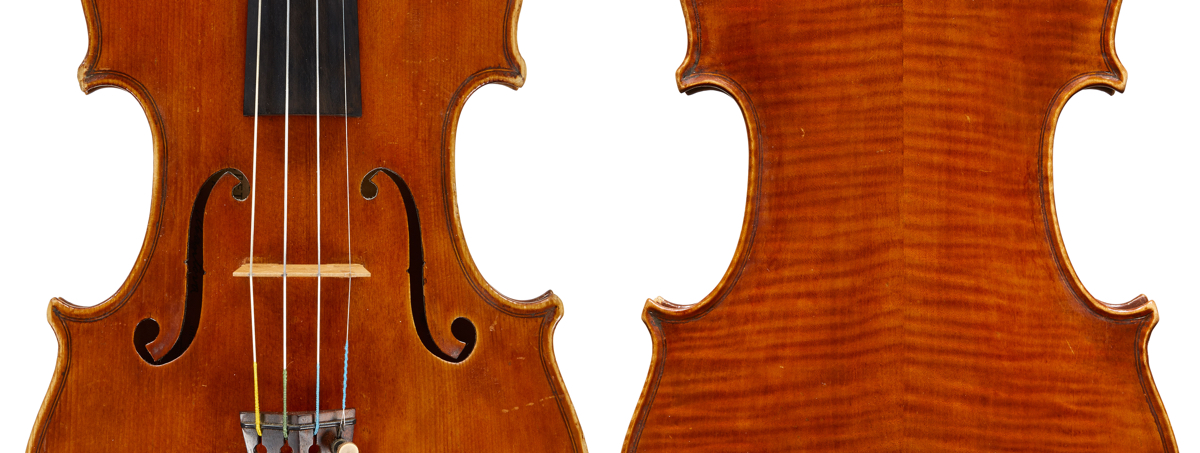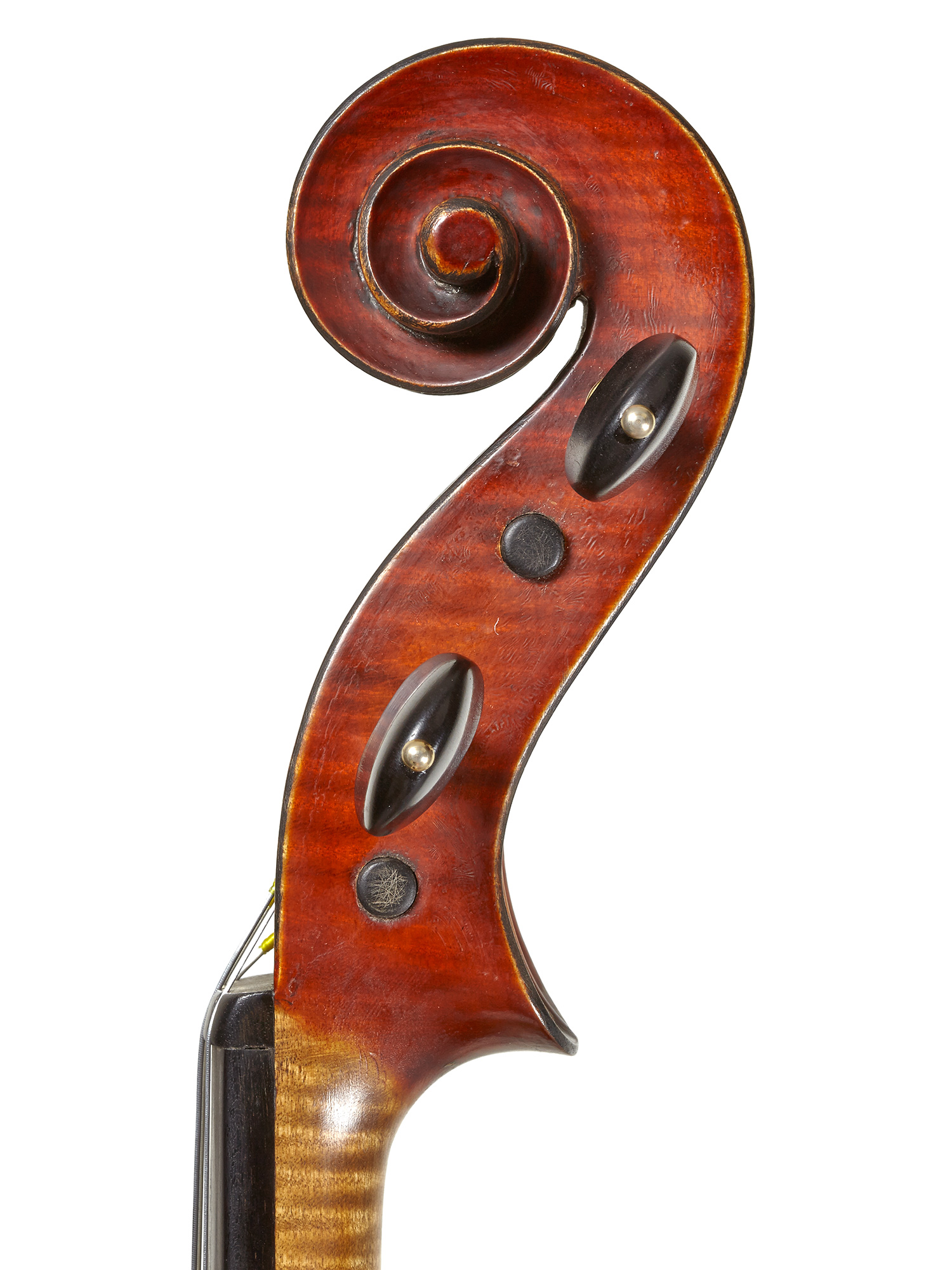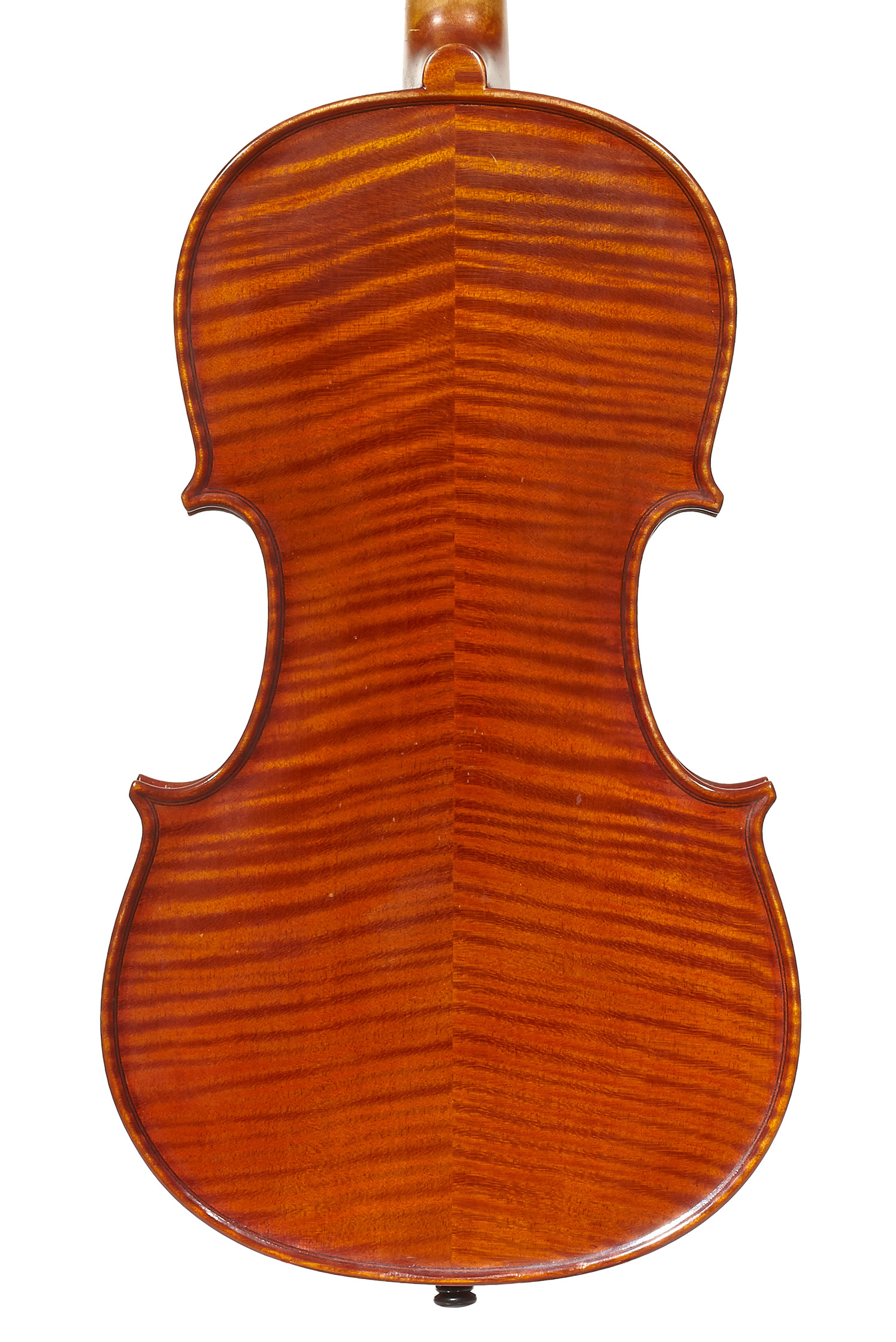The rugged aesthetic of Scarampella’s work (see part 1) was adopted by his two pupils, Oreste Martini and Gaetano Gadda. However, during the 1920s the prevailing nationalist values in Italy led to increasing interest in promoting the country’s native traditions. For violin making, this culminated in the 1937 Stradivari bicentennial exhibition held in Cremona, which treated the craft as a high art.
The Mantuan makers appear to have sensed that their approach was out of step with the taste of this politically driven marketplace and from the 1920s they began producing much more refined violins. These were consciously made as new, with fine craftsmanship and high-grade wood instead of the ‘oppio’ maple that typifies a true Scarampella. Yet instead of turning their attention to classical models of the past, they continued to use the templates from Scarampella’s workshop.
The Mantuan makers appear to have sensed that their approach was out of step with the taste of this politically driven marketplace
Sometimes these more refined instruments can look overworked, with exaggerated edgework and an over-delicate feeling to the arching. The wide volutes and narrow chamfers of a Scarampella scroll seem balanced with rough tool marks, but in a cleanly cut scroll they become a little open and unbalanced, especially on cellos. Compared with the contemporary works of Simone Sacconi or Giuseppe Fiorini, these Mantuan instruments can appear eccentric, but in reality they are intelligent expressions of a highly successful artistic approach to violin making.
Nevertheless, Scarampella’s influence seem to have been ever-present. Martini and Gadda continued to produce rugged violins throughout their careers, some of which they labeled for themselves. Others were labeled to pass off as the genuine article, but Scarampella passed on his commitment to an individual artistic ideal to his pupils and their fakes have too much of their own personalities in them to pass expert scrutiny.
The enduring influence of Scarampella can be seen in the following three modern Mantuan instruments.
Gaetano Gadda violin, 1948
By the 1940s Gadda had almost completely reverted to Scarampella’s style, probably in response to the changing markets of the Second World War, as troops of the German and then Allied armies occupied the region. The period following the liberation of Italy in 1943 appears to have been a particularly prolific time for him.
This 1948 Gaetano Gadda violin is a good example from this period. Its more finished edgework provides the most immediate contrast between Gadda and his teacher, and elsewhere the work is also cleaner. Overall, however, the violin is intentionally close to the work of Scarampella, giving it a distinguished – if not actually antiqued – appearance.
Mario Gadda viola, c. 1965
Gadda’s son, Mario, continued the Mantuan tradition and specialised in copies of Scarampella and Balastrieri. The c. 1965 viola shown here retains many of the features found in clean ‘new’ work produced in the 1920s from Scarampella models and the over-emphasized edgework is typical of this kind of instrument.
Enzo Barbieri violin, 1996
A violin by Enzo Barbieri made in 1996 again provides an eloquent throwback to the developments of 1920s Mantua – even more remarkable given the domination of Stradivari’s violin making aesthetics since the publication of Sacconi’s Secrets of Stradivari in 1972.
Mario Gadda’s death in 2008 ended the direct line of Scarampella’s influence, but now and again we still see new violins by makers who have attempted to copy Scarampella’s style, tempted by the apparent ease of finding its faults, but seldom grasping its fundamental quality.
Tarisio sold these three modern Mantuan instruments in 2013.


